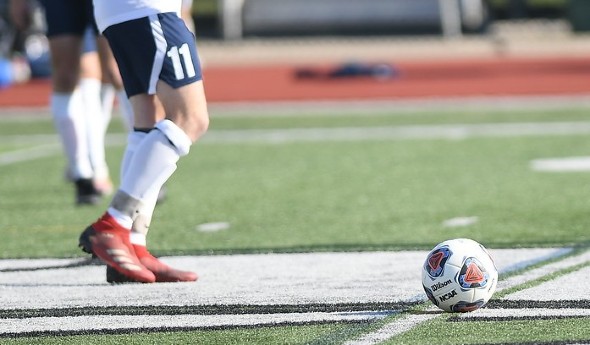
Acupuncture Can Enhance Performance
January 5, 2021
Henry Ford Health System
In the ancient Chinese medicine of acupuncture, thin needles are gently inserted into specific areas of the body, stimulating blood flow to speed the recovery of certain ailments.
It can be used as a treatment for everything from headaches and unbalanced hormones to joint pain and weakened immune systems. Acupuncture is also popular among athletes, as many of them incorporate it into their wellness regimens to stay in peak physical condition.
“Back in the day, athletes ate steak, smoked cigars and drank whiskey during the week and then played football on Sunday,” says Thomas Betts, a sports medicine acupuncturist with Henry Ford Health System. “But today, to improve their performance, athletes are attacking the body from every angle possible with diet, lifestyle and exercise. NBA players, for example, have talked about how acupuncture keeps them feeling their best.”
But you don’t have to be an NBA star to reap the benefits of acupuncture. Whether you’re a professional or student athlete, or you exercise and play sports for fun or to challenge yourself, here are ways acupuncture can boost your game:
- Acupuncture can help you recover more quickly from an injury. “If a muscle is torn, acupuncture won’t put it back together, but for sprains and strains, muscle soreness and tendonitis, acupuncture can decrease inflammation and speed the healing process,” says Betts.
- Acupuncture can reduce the need for “rest days.” If you just had an intense workout and your muscles are sore, getting acupuncture afterward can loosen the muscles and decrease soreness so you don’t have to take a day off to recuperate before training again.
- Acupuncture can improve flexibility, decrease muscle tension and increase muscle activation. “This is done with motor point acupuncture,” says Betts. “The motor point is where the brain attaches to the muscle via the motor nerve. By using needles to stimulate a motor point, it is like rebooting a phone or computer that isn’t working well: Motor point acupuncture is autoregulating, in that it can deactivate a tight muscle or reactivate an inhibited or weak muscle.”
- Acupuncture can provide immediate pain relief. “Some studies show that acupuncture can provide as much as, if not more pain relief than medication,” Betts says. “It differs for everyone, and it depends on what is being treated, but some people say they feel a difference right after a session, and others say they feel better about 20 to 30 minutes later.” Pain relief can last from a few hours to a few days.
- Acupuncture can help prevent injury. Because acupuncture can reactivate weak muscles and decrease muscle tension, it can also be used as a preventative measure against injury, Betts says. But you should always still stretch before and after exercising!
Learn more about acupuncture and other integrative medicine services at Henry Ford. To make an appointment, you can request one online or by calling 1-833-246-4347.
Thomas Betts, DOAM, RAc, is a certified sports acupuncturist with Henry Ford Health System. He sees patients at the Henry Ford Center for Athletic Medicine in Detroit.

This Week in High School Sports: 3/6/24
By
Jon Ross
MHSAA Director of Broadcast Properties
March 6, 2024
This week's edition reviews the weekend's MHSAA Individual Wrestling Finals, Competitive Cheer Finals and Bowling Finals.
 The 5-minute program each week includes feature stories from MHSAA.com or network affiliates, along with "Be the Referee," a 60-second look at the fine art of officiating.
The 5-minute program each week includes feature stories from MHSAA.com or network affiliates, along with "Be the Referee," a 60-second look at the fine art of officiating.
"This Week in High School Sports" is powered by MI Student Aid, a division within the Department of Lifelong Education, Advancement, and Potential (MiLEAP).
Listen to this week's show by Clicking Here.
Previous Editions
Feb. 28: Team Wrestling, Girls & Boys Skiing Finals review - Listen
Feb. 21: Boys Basketball Tournament preview, Upper Peninsula Swimming & Diving Finals review - Listen
Feb. 14: Saginaw High/Arthur Hill boys basketball rivalry, Student Advisory Council - Listen
Feb. 7: MHSAA/Farm Bureau Insurance Scholar-Athlete Awards, Charles E. Forsythe Award honoree - Listen
Jan. 31: Girls sports participation, MHSAA Wrestling Tournament schedule - Listen
Jan. 24: MHSAA Women in Sports Leadership Conference, Hillman basketball's Trenton Taratuta - Listen
Jan. 10: Doug Towler's ice hockey coaching record, 2023-24 officials registration news - Listen
Jan. 3: MHSAA Girls & Boys Basketball Tournament schedules, Finals dates for all winter sports - Listen
Nov. 22: MHSAA Girls Volleyball, 8-Player Football and Lower Peninsula Girls Swimming & Diving Finals reviews - Listen
Nov. 15: Football record breakers, 2022-23 MHSAA postseason attendance - Listen
Nov. 8: MHSAA Boys Soccer, Lower Peninsula Cross Country Finals reviews - Listen
Nov. 1: MHSAA Girls Volleyball Tournament schedule, Football Playoffs first-round review - Listen
Oct. 26: Lower Peninsula Girls Golf Finals, Boys Tennis Finals review - Listen
Oct. 18: MHSAA Football Playoff selection, Bear Lake football coach Sam Mullet - Listen
Oct. 11: Upper Peninsula soccer, MHSAA sports participation excels nationally - Listen
Oct. 4: Jackson Lumen Christi's Herb Brogan, MHSAA Sportsmanship Summits - Listen
Sept. 24: All-woman football officiating crew, Powers North Central's record winning streak ends - Listen
Sept. 21: 35th MHSAA/Farm Bureau Insurance Scholar-Athlete Awards, Grass Lake QB Brayden Lape - Listen
Sept. 14: Athletic director education, MHSAA video library - Listen
Sept. 7: Adjustments to 11-player football, boys soccer Finals schedules - Listen
Aug. 31: New out-of-state opponents rules, football record book updates - Listen
Aug. 24: MHSAA.com coverage ramps up, "Made in Michigan" tells us where they are now - Listen


